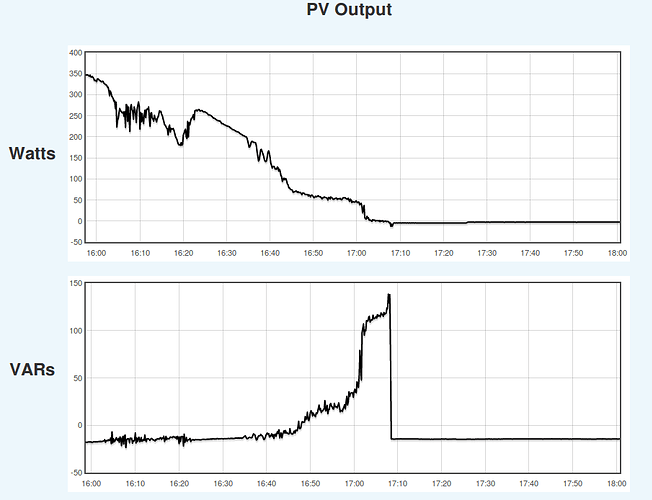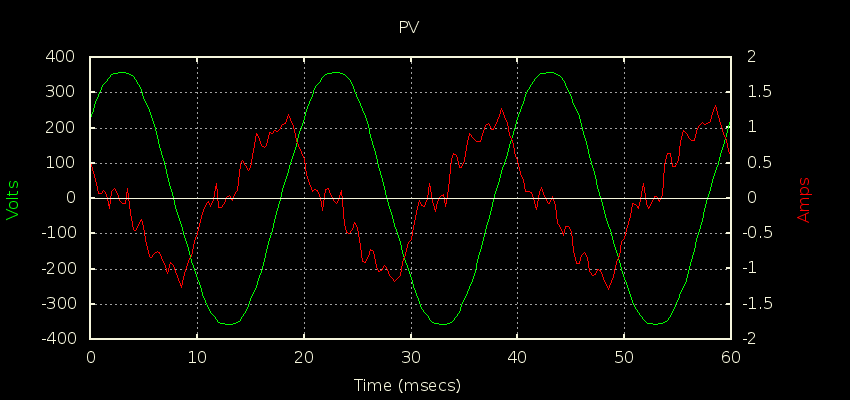I installed emontx’s and emoncms in my house a few years ago. My emon base eventually crashed and recently I’ve resurrected it, but since it was last running, I have a new 35 panel solar system installed in my house.
The main cable from my circuit breaker box to the utility meter is thicker than the emon std CT’s can encircle, so I’ve not been able to monitor those in emonCMS. But I do have another monitoring system, efergy, that has been monitoring that line and claiming higher usage than what I would expect based on adding up my emon monitored circuits and assuming after some spot testing that the other (minor) circuits are not consuming any watts. This became a mystery for me to look in to.
To reduce the number of unknowns/variables here, because I don’t have enough CT’s to monitor all circuits, I’ve started debugging by turning off the circuit panel’s master switch. As a result, the utility meter should be connected only to the solar system. To reduce the variables even further, I do this at night when the panels should not be generating any energy. I expect the wattage on the solar panel line pair to be zero and emontx shows those lines with almost no watts. (It shows 30 watts which I assume is basically zero.) OTOH… the efergy shows 500 “watts” on the utility line. Because the only thing connected to that utility line is now the solar system that’s showing (almost) no watts, I’d expect the efergy to show zero, not 500 watts.
I’ve since purchased a clamp amp meter to help me check if the efergy is nuts. Unfortunately the circuit panel is very crowded so I can only sample a few lines. Nevertheless, limited evidence suggests that the efergy is correct that there is about 2.1 + 2.1 amps on the solar panel line at the same time that the emontx’s are reporting about 30 watts. (efergy does not monitor voltage at all and just assumes 120vAC (and power factor 1.0?) and calculates “watts” [sic] based on that.)
The only explanation I’ve been able to come up with is that solar panel system is acting like a capacitor which must be resulting in a power factor of around zero so the emontx shows almost zero watts while there appears to be 4+ A of current.
Does this make sense? Would you expect a solar system to act like an capacitor (or inductor)?
Is there a fairly easy way I can modify a emonTx to reveal the power factor or take a synced snapshot of the current and voltage waveform?
J.


